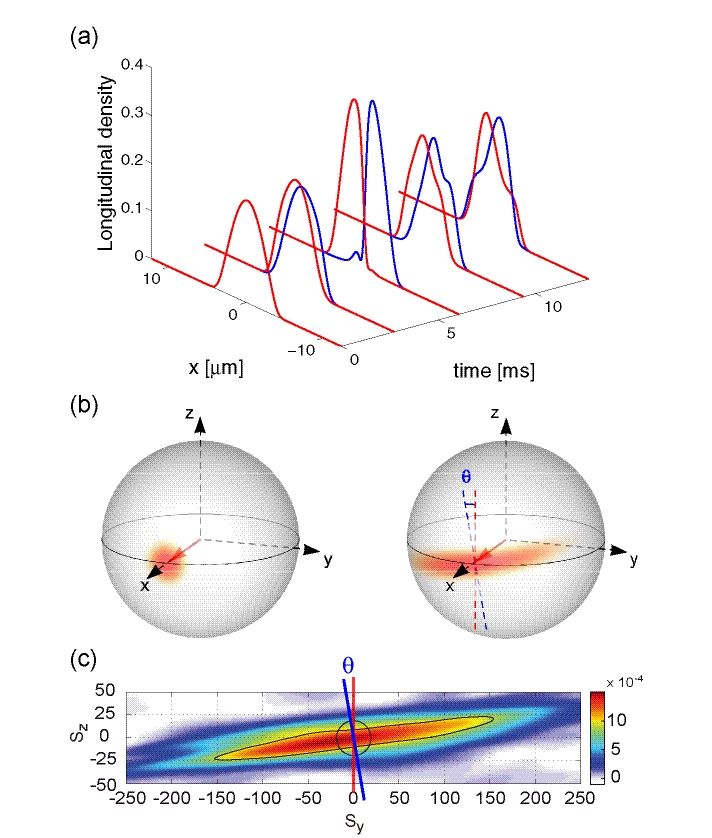(a) Using state-dependent microwave potentials, the wave functions of states 0 and 1 are separated spatially for a well-chosen time. This switches-on the atomic nonlinearity that generates the spin squeezing.
(b) Evolution of the system internal state represented as a collective spin S on the Bloch sphere. The length of the mean spin represents coherence between the states 0 and 1. The spin fluctuations in the orthogonal plane to the mean spin are isotropic for the initial state while they are reduced in the direction θ in the spin squeezed state.
(c) Reconstruction of the Wigner function of the spin squeezed state from experimental data. The black contour marks the points for which the Wigner function has decreased by 1/√e. The black circle is the same contour for the initial factorized state.
